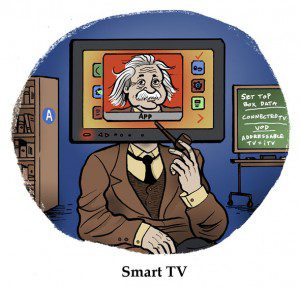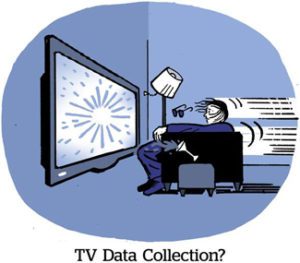 Vizio has walked a tricky tightrope since launching its advertising business in late 2019.
Vizio has walked a tricky tightrope since launching its advertising business in late 2019.
It needs its advertising and data business to offset diminishing returns and lower prices on hardware sales.
But after a tough first year on the market, with Vizio down by more than half over the past 12 months, the company is seeing the improvement it needs from the platform side of its house.
Vizio device sales were down 11% in Q2 year-over-year to a total of $298 million, the company told investors on Wednesday. Although Vizio shipped 5% more devices, it did so at a lower average price, said Vizio CFO Adam Townsend.
That seems pretty bad for a company that just make TVs. But it isn’t the end of the world if Vizio can extract more recurring revenue from those smart TV sets.
“To the point of our dual revenue model strategically, we’re willing to be at a low gross profit margin on our TV unit sales, because they’re so valuable once we get those units in homes and generate that recurring revenue stream that comes from [an] ARPU model,” said CEO William Wang.
When Vizio talks about ARPU, it means the average recurring annual revenue for a smart TV device it sells.
Largely due to growth in the ads business, Vizio went from a $14 million loss in Q2 2021 to a $2 million profit this past quarter despite the plunge in hardware revenue. A mere $2 million profit doesn’t make Vizio an ad platform powerhouse – but it’s better than being in the red.
And investors appear pleased, considering Vizio shares jumped roughly 25% overnight.
Advertising revenue rose 71% to $81 million in Q2, and Vizio added more than 200 direct brand clients. Townsend name dropped Georgia-Pacific, HP, Little Caesars, Lowe’s and Nationwide.
This represents an expansion beyond entertainment companies, which are Vizio’s bread and butter, especially with streaming services such as Starz, Discovery and Disney paying to promote their respective streaming apps.
The net result is that Vizio’s ARPU was up by more than half compared to the same period last year, and now sits at $25.87.
But advertising isn’t the only factor driving up platform revenue.
Data licensing grew 65% YoY to $30 million in Q2 2022. Although the addressable market for data licensing is smaller than advertising, it’s a lucrative business, particularly as smart TV data providers retreat into larger companies.
TV manufacturer LG acquired Alphonso in 2021 and is now the exclusive seller of Alphonso’s ACR data. Roku bought Nielsen’s ACR data business last year and replanted it in its walled garden.
With fewer and fewer options, Vizio’s relatively open data set becomes more important to a broad ecosystem.
“Our data is becoming the cornerstone of the CTV measurement market through some of our licensing partners,” Townsend said, pointing to iSpot, Comscore, VideoAmp, 605, TVSquared and Nielsen. “[They] all rely on our data to fuel their ad currency products.”

















